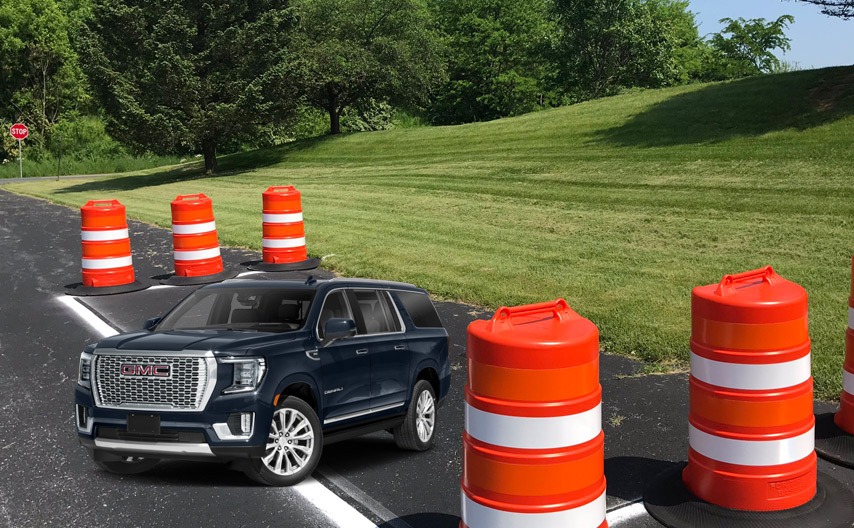
Passing a driver’s test can be a nerve-wracking experience for many new drivers, and in Ontario, one of the most challenging components is often parallel parking. This maneuver requires precision, control, and a calm mindset. However, with the right techniques and consistent practice, you can overcome the challenges and confidently ace this part of the test. Let’s delve into some essential strategies and insights to help you master parallel parking and ensure success in your driving test.
Practice Until You Perfect Your Skills
The timeless advice of “practice makes perfect” is particularly relevant when it comes to parallel parking. Mastery comes from repetition, and the more you practice, the more comfortable and confident you will feel. Seek out a quiet street or an empty parking lot where you can hone your skills without distractions. Practising regularly in the driving classes builds muscle memory and helps you develop the ability to assess parking spaces and maneuver your vehicle with precision. Consistent effort will make the steps of parallel parking feel natural, reducing anxiety during the test.
Visualisation: Picturing Success Before You Begin Your Driving Test
Visualisation is a powerful tool that can help reduce nerves and improve your performance during the test. Before attempting to park, take a moment to visualise the entire process. Picture yourself smoothly guiding the car into the space, aligning it perfectly with the curb. By mentally rehearsing each step, you can approach the maneuver with greater clarity and confidence. This technique is particularly effective in alleviating anxiety and ensuring that you stay focused on executing the task at hand.
Understanding the Test Criteria
Familiarizing yourself with the test criteria in Ontario is crucial to passing the parallel parking component. The Ontario driver’s handbook outlines the key elements that examiners assess during the test. These include maintaining a safe distance from the curb, positioning your vehicle accurately within the parking space, and using your mirrors and signals appropriately.
Understanding the dimensions of a typical parking space is equally important. Ensure you know the acceptable limits for positioning your car relative to the curb. Adhering to these criteria will demonstrate your ability to park safely and effectively, increasing your chances of passing the test.
Identifying the Right Parking Spot
Selecting an appropriate parking spot is a fundamental step in successful parallel parking. During the test, look for a space that is at least one and a half times the length of your vehicle. This extra room provides ample space for maneuvering and reduces the likelihood of hitting another car.
Once you have identified a suitable spot, signal your intention to park by activating your turn signal. Bring your vehicle to a stop parallel to the car in front of the space, leaving about two feet of distance between your car and the one ahead. Proper alignment at this stage sets the foundation for a successful parking attempt.
Achieving Precise Positioning
Precision is key to executing a flawless parallel park. Begin by aligning your rear bumper with the rear bumper of the parked car. This positioning ensures that you have enough space to maneuver without crowding the vehicles on either side. As you start to reverse, turn your steering wheel sharply toward the curb. Once your car begins to enter the space, straighten the wheel to guide the vehicle parallel to the curb. Adjustments may be necessary to ensure that your car fits neatly within the space, so remain calm and take your time to perfect the position. Learn precise positioning in your driving classes.
Checking Mirrors and Blind Spots
Maintaining awareness of your surroundings is essential during parallel parking. Use your rear-view mirror and side mirrors to monitor traffic and pedestrians behind you. Perform a shoulder check to identify any blind spots and ensure there are no approaching vehicles or obstacles in your path. Being vigilant improves safety and demonstrates your attentiveness to the examiner.

Mastering Turning Techniques
Executing the correct turning technique is a critical component of parallel parking. Once you’ve signalled your intention to park, slowly reverse your vehicle while turning the steering wheel sharply toward the curb. As your car begins to enter the space, straighten the wheel to guide the vehicle parallel to the curb. Make any necessary adjustments to ensure your car is evenly positioned and close enough to the curb without touching it.
By following these steps, you’ll show the examiner that you can handle the maneuver with confidence and skill. Take your time and prioritise precision over speed. Remember, the goal is to park safely and effectively.
Conclusion
Parallel parking is a skill that requires patience, practice, and preparation. While it may seem daunting at first, following these tips will help you approach the maneuver with greater confidence. Remember to practice regularly, visualise success, and understand the driving test criteria in Ontario. By mastering the techniques of precise positioning, mirror checks, and turning, you can transform parallel parking from a challenge into an accomplishment. Stay calm, stay focused, and trust in your preparation. With determination and effort, you’ll be well on your way to passing your driver’s test and mastering the road ahead.